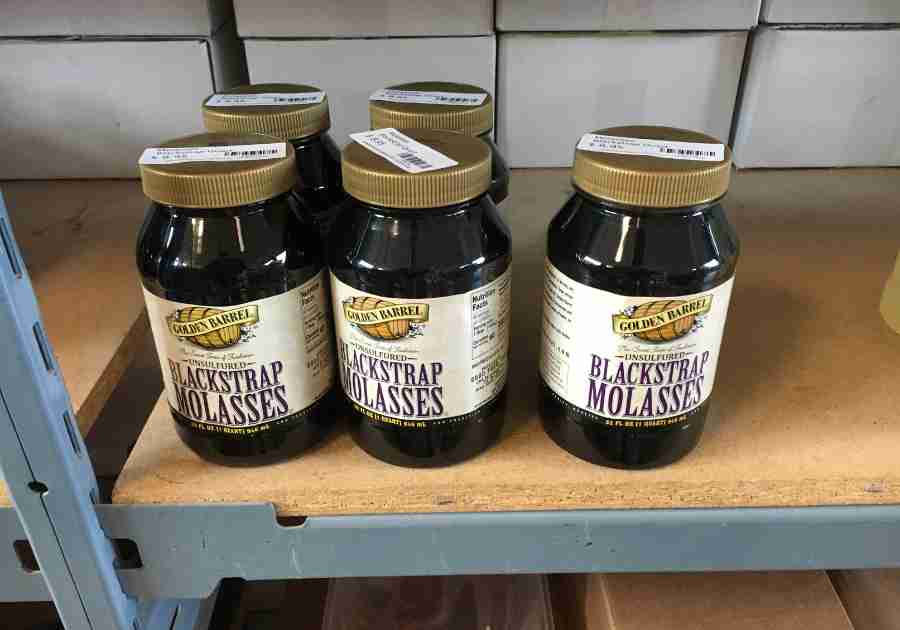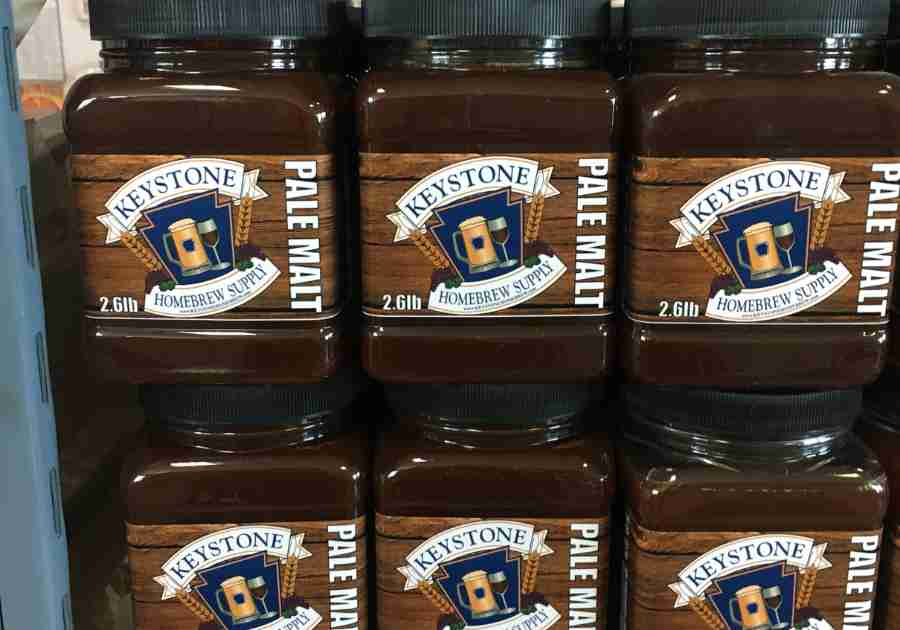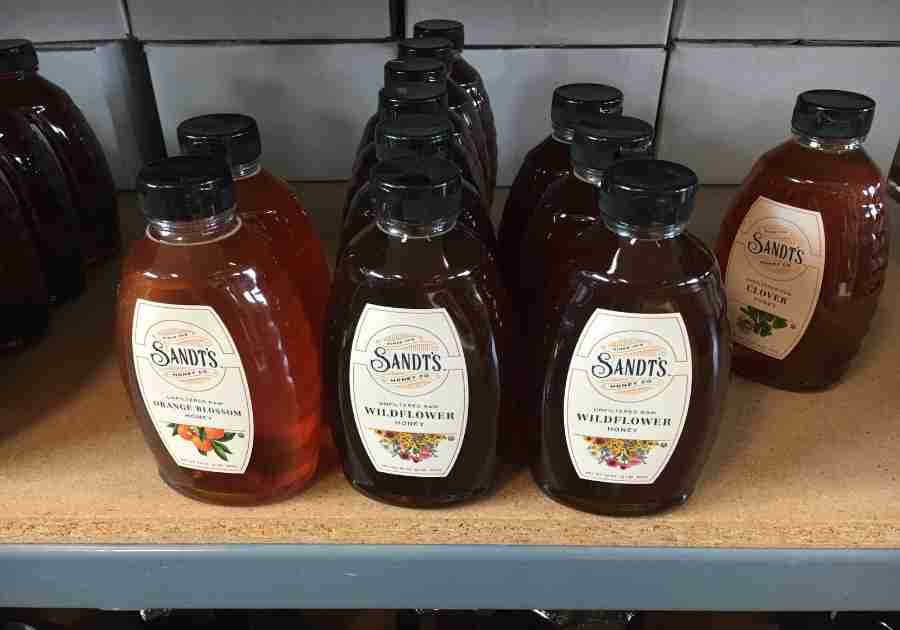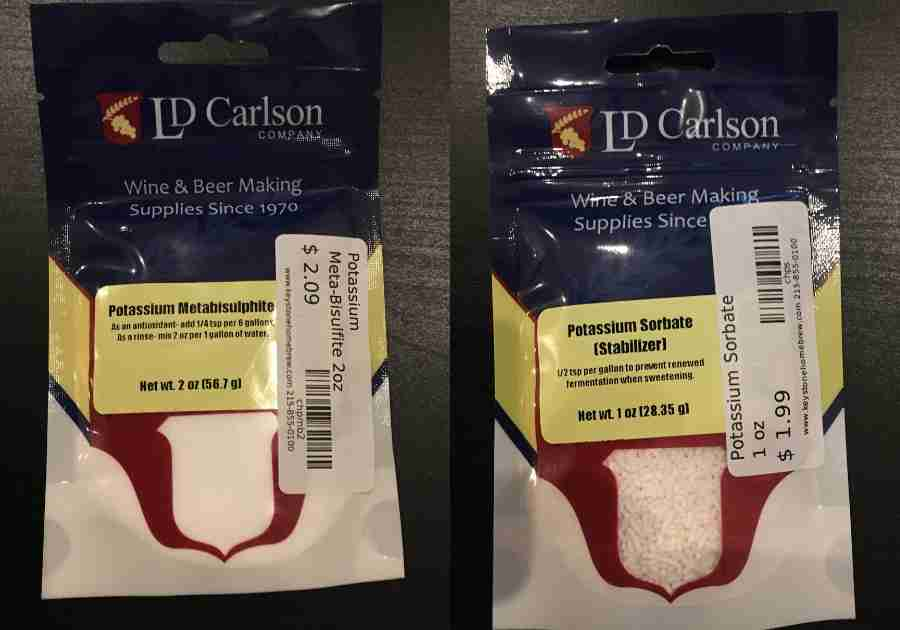When people are making mead, sometimes they get this idea in their head of what it will taste like before hand. Then they go about making the mead and are disapointed with how it comes out. This can be due to any number of factors impacting your brew.
One of the misconceptions is that mead should be sweet due to the fact that honey is being used. The reality is that a lot of the time the sweetness of the honey is usually all but gone after fermentation takes place.
Sometimes this can lead to disappointment. There’s a few ways around this, but one of the easiest ways is to just back sweeten your mead.
When back sweetening, you can’t just add in the sugar or it will restart fermentation again resulting in the sugar getting turned into more alcohol. Before we add the sugar, we have to add stabilizers of some type to stop the yeast from restarting fermentation.
¼ teaspoon of potassium metabisulfite/5 gallons and ½ teaspoon of potassium sorbate/1 gallon must be added before adding sweetener to act as a preservative and inhibit the yeast.
Back sweetening is one of the techniques that can turn your brew into something meh into something truly fantastic and drinkable.
Choosing a Sweetener
When choosing what exactly you want to use to back sweeten you have a lot of options. You could choose anything that has a sweet taste really in order to get the job done. Different sweeteners that are used a lot in mead include honey, table sugar, maltose, fruit juice, molasses, agave, and even sweeteners like stevia.
Different sweeteners have slightly different results depending on what you use. There’s slightly different ways that you would add a sweetener depending on which one you go with. There’s also different tastes associated with each one. You need to figure out through research or experimentation which one you want to go with.
There’s advantages and disadvantages to using a specific type of sweetener over another one. When picking a sweetener to use, there’s different factors you should consider besides just taste.
For instance, although honey is used a lot because it’s what the main ingredient of mead is, it turns out that honey is slightly harder to dissolve in your already fermented brew whereas something like fruit juice would be relatively easy to add. Table sugar is easy to use and dissolve, but gives just an uncharacteristic sweet taste that may be undesirable. That being said it’s usually the go to for back sweetening. Fruit juice is easy but isn’t something you would want to add to a regular mead but might be great for a melomel. Something like maltose would be great if you were making a braggot, but might not have the desired taste to use in a regular mead.
There’s also a couple sweeteners you could use that you wouldn’t have to stabilize for. These are sweeteners that you don’t have to worry about fermenting. Some of these are sweeteners that aren’t sugar such as xylitol or stevia. These sweeteners usually have an “artificial” taste to them that many people don’t like. Another drawback is that they are way more sweet than regular sugar. If you are going to use these, use a very conservative amount.
Finally, another option you could consider is using juice concentrates that already have preservatives added to them. Due to the added preservatives, these juice concentrates won’t ferment. Again, be conservative when adding to your mead.
When to Back Sweeten?
Before we get to the actual process of back sweetening we have to address when exactly you should be back sweetening. If you decide to back sweeten, you need to ensure that your fermentation is completely finished first. This is because you want to maximize the amount of alcohol in your mead that is according to your recipe you’re following before stopping. Should you add your stabilizers before this, you will not have the desired alcohol in your brew.
To ensure your mead is completely finished fermenting you’re going to have to have accurate hydrometer readings. If the gravity readings say that you are done, it’s time to put in your stabilizers. After a day the stabilizers have done their magic and you can add your sweetener. If you aren’t using stabilizers and are adding sweeteners past the alcohol tolerance level of your yeast, you can just wait til it’s done fermenting completely and add sweetener after.
In order to add the sweetener, you want to slowly pour your desired amount into your vessel while gently stirring. The idea is to make sure everything is as dissolved as can be into your mead without majorly disrupting the yeast, stabilizer, and gas inside.
How Much Sweetener Do I Need?
When it comes to how much sweetener you need in order to back sweeten, you really need to experiment or use reliable research. I have personally gone overboard and used too much sweetener and the result was I had to throw the mead away because it was undrinkable. A little sweetener can go a long way. You can always add more sweetener, but you can’t take it out again.
One method I have used for mead is I’ll pull a glass full of mead out of my vessel, and I’ll slowly add sweetener to it to get my desired sweetness level. When I say slow, I mean really small amounts. When I reach my desired sweetness level, I can just do the math and extrapolate how much I’d need for the whole batch.
I really want to emphasize that you need to not go overboard with your sweeteners. Different sweeteners have different sweetness levels. So you could think you’re adding the right amount because it’s the same amount of another sweetener you used, but it’s actually way too much.
Back Sweetening Techniques
There’s two techniques to use when you’re back sweetening mead. The first is to stabilize your mead using stabilizers. The second technique is to not use stabilizers and add sugar past the alcohol tolerance of the yeast you are using.
I will almost always use the stabilizer method because it’s easier, more consistent, and takes less time. However, some people may be opposed to adding stabilizers to their final product. Other people may be doing an old school mead before these chemicals existed. Or, perhaps they are just out of them and don’t feel like getting more. In that event, you can go with the traditional non-stabilizer method.
For the stabilizer method, there’s a few steps you will have to take:
- Make sure that your mead is fermented where you want it to be by using a hydrometer to gauge where it’s at. Once you add the stabilizers you can’t unadd them, so be sure.
- Add potassium metabisulfite. This protects your mead from wild yeasts, bacteria and also acts as a preservative protecting your mead from oxygen. The amount you should use is ¼ teaspoon per five gallons or 1.23 grams. If you’re using 1 gallon use .246 grams. The reason I add this first is because I want to make sure that with no yeast activity going on I don’t want any bacteria or anything to take over fermentation.
- Wait 24 hours. After adding the metabisulfite, you should wait 24 hours to have it work.
- Add potassium sorbate. This will inhibit yeast reproduction to make sure fermentation won’t restart. Use a ½ teaspoon or 2.84 grams per gallon. For a 5 gallon batch, use 14.2 grams or 5 ½ teaspoons.
- Wait another 24 hours. This is to make sure the sorbate is taking effect and there aren’t any yeasts reproducing. It will also help the mead settle and clarify a little.
For the non-stabilizer method, it’s all about pushing your sweetener past the tolerance levels of the yeast you’re using.
- Figure out what the alcohol tolerance of your yeast is that you’re using. Once you have that either plan to use more sweetener in the primary than the yeast can tolerate or gradually add more sweetener to your mead.
- If you’re adding gradually, let your mead ferment fully. Once you see it’s fully fermented, add more sweetener to the mix. This could very well restart fermentation, so you’ll have to carefully measure with a hydrometer and monitor what’s going on over a few days.
- Once you see the fermentation has stopped, add more sweetener to desired sweetness level and monitor again for another day.
A Word On Clarity
Do you care if your mead is clear? If so, let the mead age until it’s clear, as the added sweetener will cause some cloudiness. You could also use stuff like Bentonite or Sparkalloid which are agents that you put in your mead to accelerate the clearing process.
Conclusion
To recap, the process for most people who are back sweetening will be to add potassium metabisulfite, wait 24 hours, add potassium sorbate, wait 24 hours, then add the sweetener. It’s simply a matter of following these easy steps and then experimenting with how much sweetener you want to add for desired taste.
Back sweetening mead is a way to create the perfect tasting mead or cider that doesn’t have that overly acidic taste that a lot of beginner meads have. Just by following a few more extra steps you could have the perfect tasting mead that everyone will enjoy!




